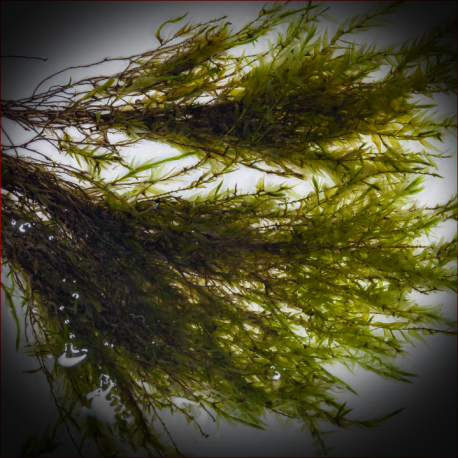More info
Datasheet
| Aquarium Compatible | yes |
| Plant Outdoor | yes |
| Plant Emersed Growth | unknown |
| Plant Growth | slow |
| Temperature Tolerance | 4°C / 39.20°F - 26°C / 78.80°F |
| Temperature | 10°C / 50.00°F - 22°C / 71.60°F |
| Carbonate Hardness | 0-14 kh |
| pH Value | 5-7 ph |
| Light | low-high |
| Carbon Dioxide (CO2) | 20-40mg/lmg/l |
| Nitrate (NO3-) | 10-50mg/lmg/l |
| Phosphate (PO43-) | 0.1-3mg/lmg/l |
| Potassium (K+) | 5-30mg/lmg/l |
| Iron (Fe) | 0.01-0.5mg/lmg/l |
General Description
Fontinalis hypnoides, belonging to the Fontinalis genus, is a widespread aquatic moss predominantly found in the northern hemisphere. Growing solely underwater, this moss thrives in stagnant or slow-flowing waters. Distinguishing itself from the more common willow moss, Fontinalis antipyretica, F. hypnoides displays a delicate, fine structure with smaller, narrower, and un-arched leaves. Its shoots branch out vigorously, eventually creating attractive dark green clusters.
Aquarium Suitability
This moss is considered suitable for aquariums due to its aesthetic appeal and adaptability to aquatic environments. Its demands and hardiness make it a moderate-level aquatic plant for hobbyists (see table).
Demands and Hardiness
Fontinalis hypnoides has a moderate level of difficulty to maintain in aquariums. It is known for slow growth and can tolerate colder temperatures, making it suitable for a variety of tank setups.
Aquascaping & Usage
Fontinalis hypnoides, with its fine-leaved appearance, is ideal for aquascaping purposes in nano tanks. Its epiphytic nature allows it to grow on hardscapes, making it a versatile choice for creating visually appealing aquatic landscapes.
Propagation
Propagation of Fontinalis hypnoides can be done through splitting and cutting off daughter plants. This method allows for the expansion of this moss within the aquarium setup.
Habitat and Distribution
Fontinalis hypnoides is commonly found in the northern hemisphere, primarily in regions with stagnant or slow-flowing waters. Its natural habitat includes aquatic environments where it can thrive submerged, contributing to the ecosystem's biodiversity.

